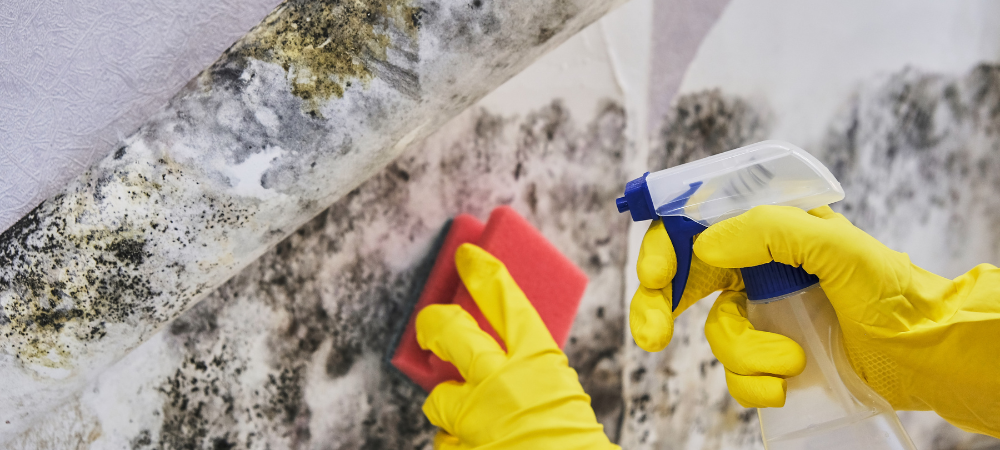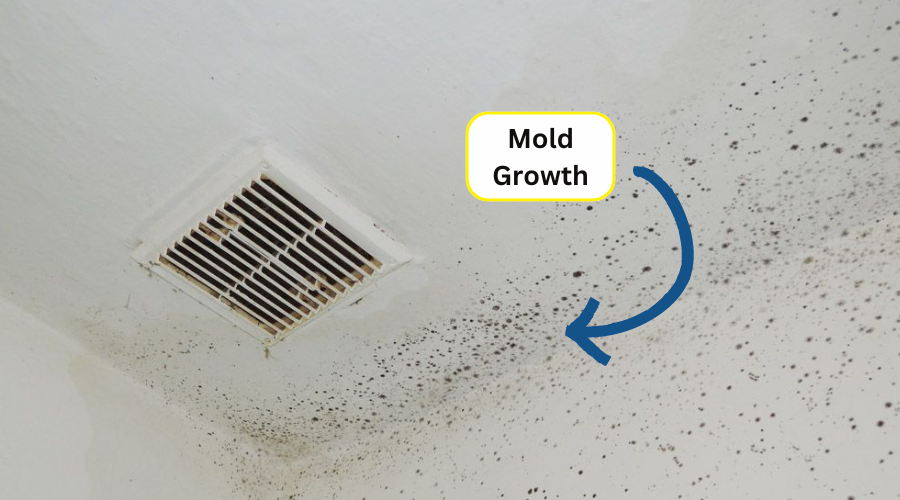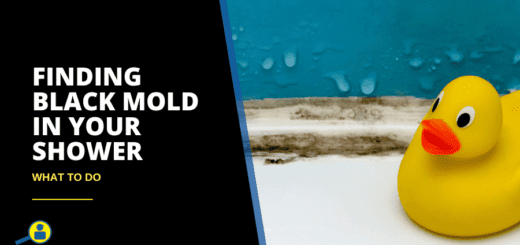The Dangers of Living with Mold in the House
MoldMold is a type of fungus that grows in damp or humid conditi... More can be a very sneaky substance, as it thrives in moist, dark areas. Although it is a common issue homeowners may face, many don’t consider its impact on humans. However, once excess moisture has settled into any porousPorous describes a material that contains small openings or ... More material, such as drywall, it becomes a problem for everyone. From here, moldMold is a type of fungus that grows in damp or humid conditi... More can disperse its sporesSpores are microscopic reproductive units of fungi or mold t... More and spread throughout the entire property.
Understanding the basics of mold growth and its potential impact is essential for maintaining a safe and healthy environment. This blog will discuss the dangers of moldMold is a type of fungus that grows in damp or humid conditi... More growing in the home and how to prevent it.
What is Mold?
As moldMold is a type of fungus that grows in damp or humid conditi... More can be classified as a fungus, it grows and responds like the others within its kingdom. In other words, it develops, eats, and spreads its sporesSpores are microscopic reproductive units of fungi or mold t... More the same as other molds, mushrooms, and bacteria. The home provides the perfect resourcesResources include tools, personnel, equipment, and materials... More to allow for its development and growth.
Although not the most common, black mold is classified to be one of the most dangerous types of moldMold is a type of fungus that grows in damp or humid conditi... More. As it is most frequently found in dark, undisturbed areas, these places can include rarely used shower stalls, behind the walls, in the attic, crawlspaces, and underneath staircases. To avoid these uninvited, dangerous inhabitants, be sure to check these areas now and then in addition to keeping moisture levels to a minimum.
Dangers of Mold
The presence of moldMold is a type of fungus that grows in damp or humid conditi... More in the home is often overlooked by homeowners, yet its dangers are profound. Homes and other properties offer the nutrients moldMold is a type of fungus that grows in damp or humid conditi... More requires to thrive; moisture, darkness, and organic materialsOrganic materials are derived from living organisms, such as... More. When these nutrients are present, moldMold is a type of fungus that grows in damp or humid conditi... More can become destructive to building structures and the well-being of humans.
Health Risks
MoldMold is a type of fungus that grows in damp or humid conditi... More can leadLead is a heavy metal that can be toxic to humans, especiall... More to several health concerns, some of which can be severe. Certain age groups, such as children and the elderly, are more susceptible to the health risks that moldMold is a type of fungus that grows in damp or humid conditi... More poses. Having a weakened immune system can make these individuals more vulnerable to mold-related illnesses.

The CDC, or the Centers for Disease Control and PreventionPrevention refers to actions taken to reduce the likelihood ... More, warns about the dangers of living with moldMold is a type of fungus that grows in damp or humid conditi... More in the home:
- Respiratory tract symptoms include coughing, wheezing, and swelling of the throat.
- Those who have asthma and allergy problems are especially at risk.
- Those with hypersensitivity pneumonitis are prone to the immune-mediated condition.
If moldMold is a type of fungus that grows in damp or humid conditi... More is not addressed promptly, the effects on human health can be severe. Identifying the signs of mold exposure is essential for proactively addressing the growth.
Air Travelers/Contamination
MoldMold is a type of fungus that grows in damp or humid conditi... More will thrive anywhere there is an optimal amount of moisture and porousPorous describes a material that contains small openings or ... More materials to feast on. These conditions can include a leaking roof, leaking pipes, damp areas of the basement and crawl spaces, flooding, or any path of moisture from the kitchen pipes to the basement. Even leaving damp towels on the floor is sufficient for moldMold is a type of fungus that grows in damp or humid conditi... More growth.
As soon as it has found a proper location to grow and develop, moldMold is a type of fungus that grows in damp or humid conditi... More will easily travel through the air, finding other susceptible spots. This is where the negative health effects start to occur. Keep in mind that moldMold is a type of fungus that grows in damp or humid conditi... More can be the cause of the following symptoms:
- Allergies have suddenly grown worse
- Sudden itching, sneezing, and rashes
- Feeling irritable and lethargic
- Difficulty breathing and/or sleeping

Although moldMold is a type of fungus that grows in damp or humid conditi... More prefers to remain in undisturbed areas, it will release its sporesSpores are microscopic reproductive units of fungi or mold t... More when feeling the slightest disturbance. These can include vibrations within the walls and floors when people are walking around on the above floor. When these sporesSpores are microscopic reproductive units of fungi or mold t... More are dispersed into the air, they can then enter the ventilation systems, such as the air ducts and air conditioning unit. Once they are inhaled, this is where the symptoms of coughing, wheezing, sneezing, etc. will start to take effect.
Damage to Building Materials
Once the source of the moldMold is a type of fungus that grows in damp or humid conditi... More has developed in a certain area, it can eat away at its host; this can cause severe damage to the structural integrity of your property. Potential signs can include damaged hardwood floors, discoloration of the walls and ceilings, or condensation on the windows and walls. It can also be associated with a strong, musty odorAn odor is a smell, often detectable by the human nose, whic... More. Those who are most sensitive to strong smells will notice this right away.
As moldMold is a type of fungus that grows in damp or humid conditi... More will not go away on its own, it is up to you, the property owner, to find the moldMold is a type of fungus that grows in damp or humid conditi... More and call professional mold remediation services. These services will include:
- InspectionInspection is the careful examination and assessment of a pr... More and remediation of the areas that contain moldMold is a type of fungus that grows in damp or humid conditi... More
- Decluttering the property if there are items that are contributing to the risk of moldMold is a type of fungus that grows in damp or humid conditi... More
- Lowering the moisture levels within the home or building
- Proper air circulation throughout the property
Do You Suspect Mold Growth in Your Home?
As soon as you suspect signs of moldMold is a type of fungus that grows in damp or humid conditi... More, it is important to act promptly to remove and remediate the area. For moldMold is a type of fungus that grows in damp or humid conditi... More growth that is contained in small areas, you can clean the moldMold is a type of fungus that grows in damp or humid conditi... More yourself using do-it-yourself methods. If the moldMold is a type of fungus that grows in damp or humid conditi... More infestation is large or if the moldMold is a type of fungus that grows in damp or humid conditi... More is toxic, it is advisable to hire a professional mold remediation service to safely and effectively remove the moldMold is a type of fungus that grows in damp or humid conditi... More.
The professional technicians of RestorationMaster inspect, remediate, and prevent moldMold is a type of fungus that grows in damp or humid conditi... More growth from occurring in the future. Professionals have years of experience and participate in ongoing training to ensure their methods are most effective.












